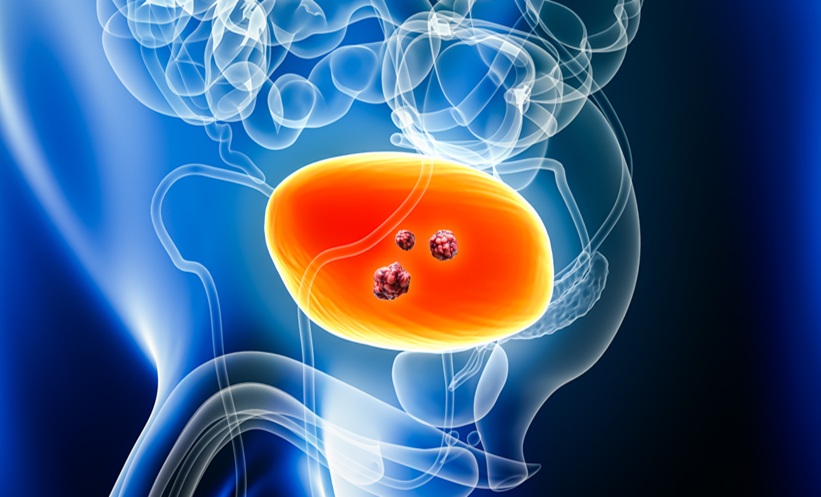With over 30 years of experience as a urologist, what initially sparked your interest to pursue a career in this field and motivated you to progress your career further in this field?
I had originally planned a career in vascular surgery but as part of my junior surgical rotation I had a 6-month urology attachment and I really enjoyed the breadth of conditions that urology covers, everything from paediatric urology to complex voiding problems as well as a number of common cancers. During my urological training in London, I was lucky enough to spend 2 years at the Institute of Urology, which has a long tradition of a scientific approach to urology. It was this that sparked my commitment to academic urology and, once I became a consultant in 2001, I developed an interest in bladder cancer because the management of this condition has remained largely the same for the past 40 years and I could see that there was considerable room for improvement in this area.
You currently have more than 100 international publications and written book chapters on bladder cancer, as well as being an invited speaker at national and international meetings on bladder cancer. What do you believe to be the current gaps in literature and what topics merit greater attention?
I think there are two main areas. Firstly, we use a technique to remove bladder tumours (trans-urethral removal of bladder tumour) that is nearly 100 years old, and we need to refine some of the newer techniques such as en bloc resection to improve the quality of the surgery we offer to patients with bladder cancer. Secondly, patients with low-risk non-muscle-invasive bladder cancer (NMIBC) are not at risk of progression or death from the condition but still face invasive surveillance. I think we should investigate alternative options such active surveillance or surveillance with urine-based biomarkers to reduce the burden of NMIBC on these patients.
The Royal Surrey County Hospital, Guildford, UK, is one of the few institutions performing robotic-assisted radical bladder cancer surgery in the UK. What do you think other university hospitals could learn from the approach taken at your current institution?
I think the most important lesson is to adopt a team-based approach. Robotic cystectomy requires a large, dedicated team in order to offer a high-volume service. This, in turn, is critical in terms of offering a timely service for referred patients, improving outcomes, and finally adequate training opportunities. It is not sufficient simply to do a few robotic cystectomies because your institution already has a robot, e.g., for radical prostatectomy.
You are a member of the European Association of Urology (EAU) guidelines panel on the NMIBC. Could you please explain what this position entails and how it contributes to the success of the EAU Society?
The EAU NMIBC guidelines panel is one of a large number of guideline panels under the auspices of the EAU Guidelines Office. Each of these panels is responsible for critically appraising new evidence in their field and using this information to produce high quality recommendations. The EAU NMIBC guidelines panel is very active not only in drawing up guidelines on NMIBC but also in carrying out multinational collaborations and systematic reviews in area of NMICB where there is an unmet need. I think it is clear when speaking to urologists from around the world that the EAU is highly respected, particularly as a result of the EAU Guidelines initiative and this is reflected by their adoption by many national urological societies around the world.
The mission of the EAU society is to “raise the level of urological care throughout Europe and beyond.” What is one of the biggest challenges for the EAU in their goal to promote the highest standard of practices in urology in order to benefit patients?
I think the subjects that come up regularly are variations in practice and non-adherence to guidelines. The reasons for this are complex and varied such as a lack of resources but there are other reasons that are poorly understood. A better understanding of these factors would undoubtedly result in improved outcomes for patients.
This year’s EAU meeting was carried out online due to the on-going COVID-19 pandemic. What do you believe to be the advantages and disadvantages of a virtual congress?
Apart from the obvious benefit of reducing carbon footprint, I think the undoubted advantage of a virtual congress has been to widen the field of abstract submissions and improve the scientific quality. I chaired a poster session with presenters from Taiwan to Houston over 12 times zones. Many of these researchers would not have been able to present in person. On the other hand, it is repeatedly said that video technology cannot fully replicate the interactions that one gets from a live meeting and there is no doubt that some of the discussions that take place outside of the sessions themselves are incredibly useful to develop research ideas.
There was a session in the EAU congress this year titled ‘Telemedicine in urology’. What impact has the COVID-19 pandemic had on the wellbeing of healthcare professionals in urology. How have you and your team adapted during this time in order to provide highest standard of practices in urology to benefit patients?
Fortunately, urology was not in the ‘front-line’ of the hospital treatment of patients with COVID-19, so we were probably less directly affected than colleagues in other specialities. On the other hand, we do have a high proportion of patients with cancer in urology and trying to maintain our cancer workload has been very challenging. In bladder cancer, the main challenge has been for all patients to receive treatment in a timely manner. One change that has helped has been the increasing use of telephone and video clinics, which has freed up time and space within the department to the benefit of patients with cancer.
You were the chief investigator for the CALIBER trial, in the recently published study entitled ‘CALIBER: a phase II randomized feasibility trial of chemoablation with mitomycin-C vs surgical management in low-risk non-muscle-invasive bladder cancer’. Could you please highlight to our readers the principal findings and wider relevance of this study?
The principal findings of the CALIBER trial were that patients with recurrent NMIBC who received 4 instillations of mitomycin tolerated this extremely well and had a 48% complete response rate to this drug saving them the need for surgery. We also found that the surgery-only ‘control’ arm had a 20% recurrence rate at 3 months, a far higher rate than was previously assumed. Overall, the results point to a potential role of neoadjuvant intravesical chemotherapy prior to trans-urethral removal of bladder tumour rather than afterwards, as is currently the case.
As founder member and past Chair of Action on Bladder Cancer (ABC) UK, a charity that was set up to raise funds for bladder cancer research and improve patient outcomes in the UK, how much of an impact do you believe this organisation has, both directly on urologists and indirectly on patients?
Cancer charities have an important role in terms of raising public awareness, fundraising, and supporting research. Prior to the establishment of ABC UK as well as Fight Bladder Cancer, another UK charity, there were no bladder cancer charities, which was a real impediment to raising awareness and fundraising. I think one specific impact ABC UK has had on urologists directly is to fund bladder cancer specific research projects. Prior to this, bladder cancer researchers had to compete for funding against other well-resourced cancers, which was challenging.
You have specialised surgical experience in robotic surgery, blue light cystoscopy, and device-assisted intravesical therapy for bladder cancer. What are some of the unique benefits and challenges associated with these novel techniques? Are there any other innovations on the horizon in urological surgery that you think are particularly noteworthy?
These novel techniques have all shed a spotlight on aspects of our surgical practice and highlighted shortcomings in technique and outcomes. In this respect, they have proved invaluable. Nevertheless, they also illustrate the importance of proper evidence-based assessment of new techniques in clinical trials before widespread adoption in routine practice.
Finally, what advice would you give to young healthcare professionals pursuing a career in this discipline? Where do you hope they will take the field of urology, and specifically bladder cancer research and developments, over the coming decades?
I welcome and encourage young healthcare professionals into the field of academic urology and specifically bladder cancer research. I think the role of augmented reality both in the field of genomics and more practically in the day-to-day follow-up of bladder cancer is an especially exciting area, and I think that this is the area that young trainees who are likely to be very computer literate will make the greatest future contribution to our speciality.








